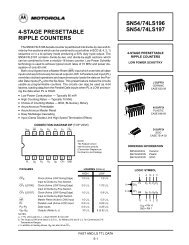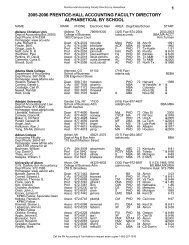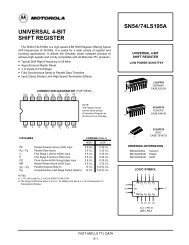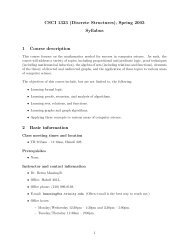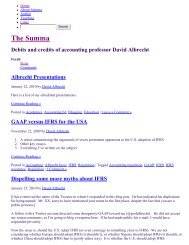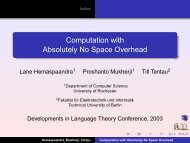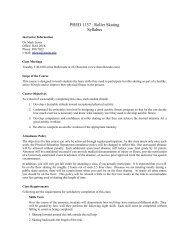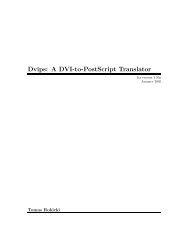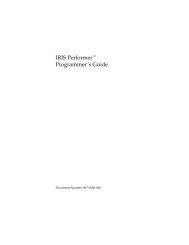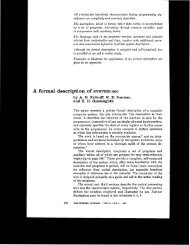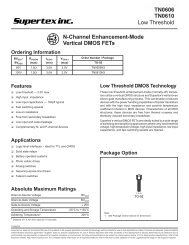fair value hedge accounting for a portfolio hedge of interest rate risk
fair value hedge accounting for a portfolio hedge of interest rate risk
fair value hedge accounting for a portfolio hedge of interest rate risk
Create successful ePaper yourself
Turn your PDF publications into a flip-book with our unique Google optimized e-Paper software.
EXPOSURE DRAFT OF PROPOSED AMENDMENTS TO [DRAFT] IAS 39 AUGUST 2003<br />
Background<br />
1. In June 2002, the International Accounting Standards Board published<br />
an Exposure Draft <strong>of</strong> limited improvements to IAS 39 Financial<br />
Instruments: Recognition and Measurement. The proposals in that<br />
Exposure Draft were consistent with the Board’s objective <strong>of</strong> improving<br />
IAS 39 without reconsidering the fundamental approach to the<br />
<strong>accounting</strong> <strong>for</strong> financial instruments. In particular, the Exposure Draft<br />
proposed only limited changes to the requirements <strong>for</strong> <strong>hedge</strong><br />
<strong>accounting</strong>, either to achieve convergence with the equivalent US<br />
<strong>accounting</strong> standard or to incorpo<strong>rate</strong> into IAS 39 guidance that had<br />
been issued by the Implementation Guidance Committee appointed by<br />
the Board’s predecessor organisation, the International Accounting<br />
Standards Committee.<br />
2. The Board received over 170 comment letters on the Exposure Draft.<br />
In addition, in March 2003, it held a series <strong>of</strong> nine roundtable<br />
discussions, in which over a hundred organisations and individuals took<br />
part. Some <strong>of</strong> the comment letters and the participants in the<br />
roundtables raised issues concerning <strong>hedge</strong> <strong>accounting</strong> <strong>for</strong> a <strong>portfolio</strong><br />
<strong>hedge</strong> <strong>of</strong> <strong>interest</strong> <strong>rate</strong> <strong>risk</strong> (sometimes referred to as ‘macro hedging’)<br />
and the treatment <strong>of</strong> demand deposits (sometimes referred to as ‘core<br />
deposits’) in <strong>hedge</strong> <strong>accounting</strong>. They were concerned that it is very<br />
difficult under IAS 39 to achieve <strong>fair</strong> <strong>value</strong> <strong>hedge</strong> <strong>accounting</strong> <strong>for</strong> such a<br />
<strong>hedge</strong> (see paragraph BC5 <strong>of</strong> the Basis <strong>for</strong> Conclusions).<br />
3. In the light <strong>of</strong> those representations, the Board decided to explore<br />
whether and how IAS 39 might be amended to enable <strong>fair</strong> <strong>value</strong> <strong>hedge</strong><br />
<strong>accounting</strong> to be used more readily <strong>for</strong> a <strong>portfolio</strong> <strong>hedge</strong> <strong>of</strong> <strong>interest</strong> <strong>rate</strong><br />
<strong>risk</strong>. The Board’s aim was to develop an approach that:<br />
(a) meets the principles that underlie IAS 39’s requirements on<br />
derivatives and <strong>hedge</strong> <strong>accounting</strong>, and<br />
(b)<br />
is workable in practice <strong>for</strong> entities that manage <strong>interest</strong> <strong>rate</strong> <strong>risk</strong><br />
on a <strong>portfolio</strong> basis, allows data captured <strong>for</strong> <strong>risk</strong> management<br />
to be used in preparing financial statements and would not<br />
require entities to make major systems changes.<br />
© Copyright IASCF 4




